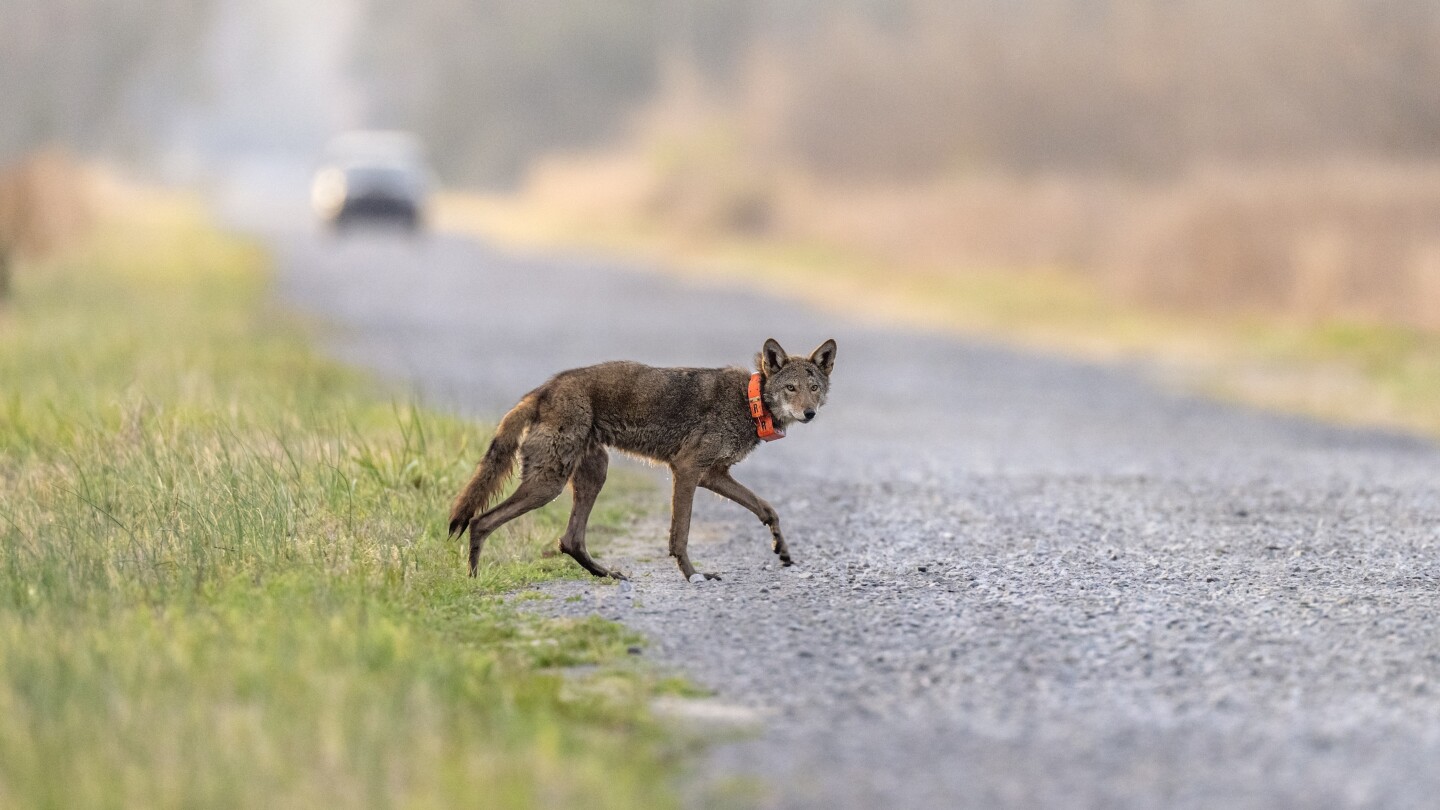Science
A North Carolina wildlife crossing will save people. Can it save the last wild red wolves too?

The Plight of Red Wolves: How Road Mortality Threatens a Critically Endangered Species
The red wolf, often referred to as "America’s wolf," is one of the most endangered canines in the world. Once thriving across the southeastern United States, their numbers have dwindled drastically due to habitat loss, hunting, and human-wildlife conflicts. Today, fewer than 20 red wolves remain in the wild, primarily confined to two national wildlife refuges in North Carolina: the Alligator River National Wildlife Refuge and the Pocosin Lakes National Wildlife Refuge. The story of red wolf No. 2444, a breeding male struck and killed by a vehicle on U.S. 64 near Manns Harbor, highlights the new and growing threat to this species: motorists.
The New Threat: Road Mortality and Its Devastating Impact
For decades, conservationists have fought to protect red wolves from hunters, but today, vehicles pose the greatest danger. The death of red wolf No. 2444 in June 2024 underscores the severity of this issue. This wolf was not just any individual; he was a critical member of the species’ survival, representing about 7% of the known wild population. His death likely led to the loss of five pups he was helping to raise, as the mother wolf never returned to care for them. "Every time you get a mortality, that’s a significant hit," said Joe Madison, head of the U.S. Fish and Wildlife Service’s red wolf recovery program. This incident has galvanized efforts to address the dangers posed by U.S. 64, a two-lane highway that cuts through the Alligator River National Wildlife Refuge, creating a deadly barrier for red wolves and other wildlife.
A New Solution: Wildlife Crossings for Red Wolves
In late December, the Federal Highway Administration awarded the first grants under a new $125 million Wildlife Crossings Pilot Program. A portion of this funding will support the reconstruction of a 2.5-mile section of U.S. 64, including the installation of fencing and culverts (small underpasses) to allow red wolves, black bears, deer, and other animals to cross safely beneath the highway. This project is unique because its goal is twofold: reducing roadkill and preventing the extinction of a critically endangered species. While wildlife crossings have become more common in recent years, this particular project places conservation at its core. As Duke University ecologist Stuart Pimm noted, "When you build wildlife bridges or underpasses, you reduce human-wildlife conflict. There is increasing awareness that reducing traffic collisions is smart for wildlife, smart for people too."
The Broader Implications of Wildlife Crossings
The U.S. 64 project is part of a larger movement to address the growing problem of road mortality and its impact on wildlife. Wildlife crossings have proliferated across the U.S. in the past 20 years, with broad nonpartisan support. These structures not only protect animals but also reduce the risks and costs associated with wildlife-vehicle collisions. A congressional report estimated that such collisions kill hundreds of people and cost more than $8 billion annually. While the primary focus of most wildlife crossings is safety, conservation is increasingly becoming a key rationale. For example, researchers have learned that different species have distinct preferences when it comes to crossing structures. Pronghorn antelope, for instance, avoid tunnels and require bridges, whereas deer are willing to use underpasses. Gray wolves and coyotes, like red wolves, can use culverts of 6 or 8 feet in diameter, provided they are funneled toward the structures by fencing.
Hope for Red Wolves: Can Wildlife Crossings Save the Species?
While the outcomes of the U.S. 64 project are uncertain, scientists agree that doing nothing will almost certainly hasten the extinction of red wolves. Red wolves were once widespread, roaming from central Texas to southern Iowa and as far east as Long Island, New York. After being declared extinct in the wild, a reintroduction program in North Carolina in 1987 showed promise, with the population growing to around 120 animals. However, their numbers began to decline sharply, with vehicle collisions emerging as a leading cause of death. One study found that vehicle strikes had killed about 5% of the red wolf population each year between their reintroduction and 2022. Today, fewer than 20 red wolves remain in the wild, making every loss deeply felt.
The Fight for Survival: Conservation Efforts and the Road Ahead
Conservationists are racing against time to save the red wolf. In September, the North Carolina Department of Transportation submitted a grant application for the Red Wolf Essential Survival Crossings Under Evacuation Route (RESCUER) project. The project aims to build a series of underpass structures along U.S. 64, accompanied by fencing to guide animals to the crossings. The estimated total cost is about $31.5 million, with $4 million contributed by private donations and an anonymous donor’s matching grant. "This is one of the most important wildlife connectivity projects in the country," said Beth Pratt, founder of The Wildlife Crossing Fund. "Critically endangered red wolves will disappear if we do nothing." While the success of the project is not guaranteed, it represents a glimmer of hope for one of the most endangered species in the world. As the red wolf’s story unfolds, it serves as a reminder of the delicate balance between human development and wildlife conservation—and the urgent need to act before it’s too late.











